Hello everybody! It’s been a while! With H+P and the clinic getting so busy, time has been lacking, but I’m hoping to carve out more space in 2020 to contribute regularly to my Training and Performance column.
For this article, I want to address a question that I have been getting from a few athletes in relation to the upcoming Re-Fridgee-8er: How much slower does running a loop course vs. a straight course make you?
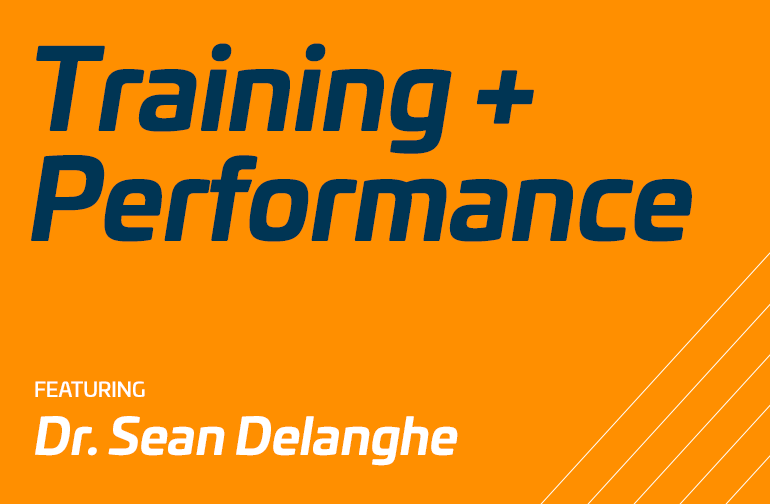
Over the years, I’ve always tried to analyze athletes’ results in an evidence-based way, especially when it’s related to factors out of one’s control.
Whether it be how much heat slows you down, or how heavy your shoes are, it’s good to be as precise as possible. This is crucial because for an athlete to improve by 5% (i.e. going from a 20 to a 19minute 5K), it requires a lot of training and dedication. As I’ve written about HERE, running in hot and humid weather can easily decrease performance by 5%. So if an athlete works hard to improve by 5%, races on a hot day, and runs the same time as they previously did on a cool day without an exact awareness of how much that heat impacted their performance, that can become a very demoralizing day when it should be seen as a positive sign of improvement.
How much do corners hurt?
Specifically, when it comes to corners, I’ve always safely assumed they are slower, but until now I have never actually looked into the exact impact they have. This is especially because I tend to lean toward recommending straight courses when my athletes are going for PBs, BQ’s etc.
There’s a lot of research out there on the topic, but here is the best summary I’ve come across, published in 2019.
In the study, they essentially used physics/mathematical models to calculate how much slower they would expect an athlete to be, assuming the same effort is exerted as the athlete rounds the corner. Essentially, they are looking at the metabolic cost of battling the centrifugal force (you fighting your body’s inertia from continuing straight as you try to turn).
They also compared real-world performances on straighter vs. more curved courses.
Impact of velocity
One way the researchers looked at things involves how the time to run a 180 degree turn changes at different velocities and radii.
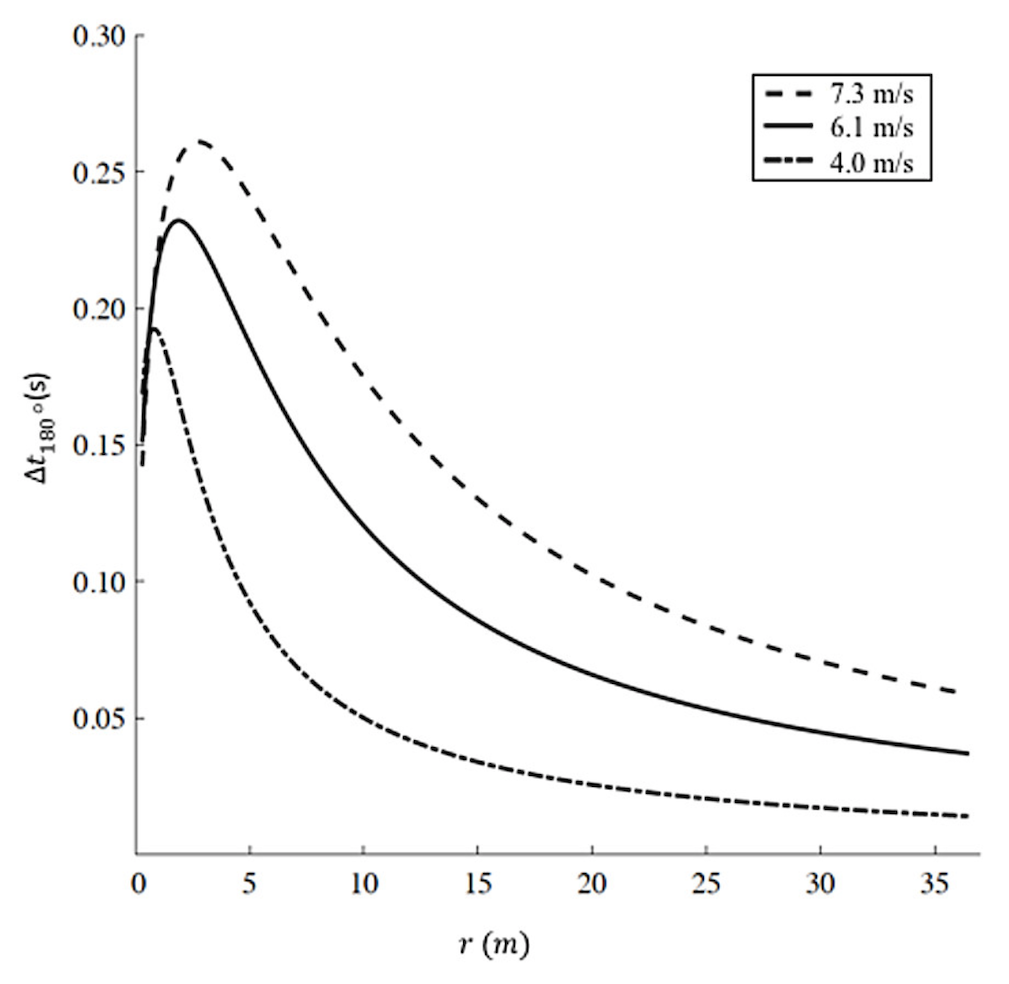
To put these numbers in perspective, a 200m indoor track typically has a radius of ~17.5m, and a 400m outdoor track has a radius of 36.8m. 4.0m/s is 4:10mins/K.
So, as you can see, the FASTER you go (top line) the more time (y-axis) you will lose around that corner simply form battling your own inertia.
Now in the extremes (radius of 4m), this model just doesn’t make sense. Nobody is going to run 7.3m/s around a 180 degree corner with a radius of 4m! But, if you look at the at radii in the middle that are more reasonable, like the 17.5m an indoor track, the lost time (Δt180°) ends up being less than 0.5s. So, if you’re looking at analysing your results from an out and back course, from a pure metabolic demand of running that one corner, you’re looking at a loss of way less than 0.5s.
Same effort, different radii
Another cool way the researchers looked at things involved how performances at key distances would change on a 400m track with various radii. So, same metabolic output, same distance, same number of laps, just different corners. Here’s what their model showed:
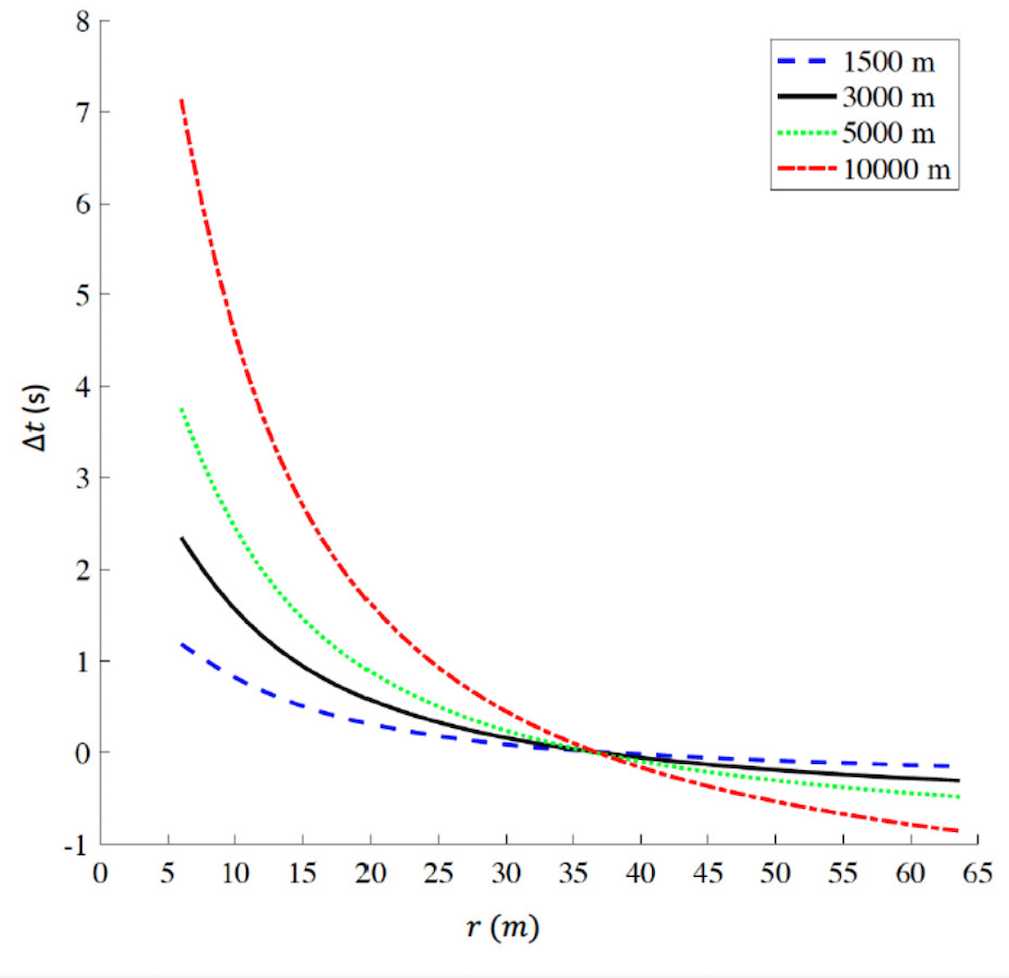
What you can see from this is even with a small, unrealistic radii of say 5m (x-axis), only about 1s is lost in the 1500m and 7s in the 10K. When you get closer to the radii of an indoor track (17.5m), the time lost approaches +/- 1 s for all distances. At an outdoor track (over 30m), the change is essentially 0s lost.
Keep in mind this is ignoring factors like not running the correct tangent OR being pushed to an outside lane by competitors. There are definitely other factors at play that may slow you down around a corner.
Monza and Breaking2
Many of us saw the first amazing performance by Kipchoge as he came so close to breaking 2:00 in the marathon in 2017. This study also did a cool look at all of the corners in this track. Here’s a reminder of what it looked like:
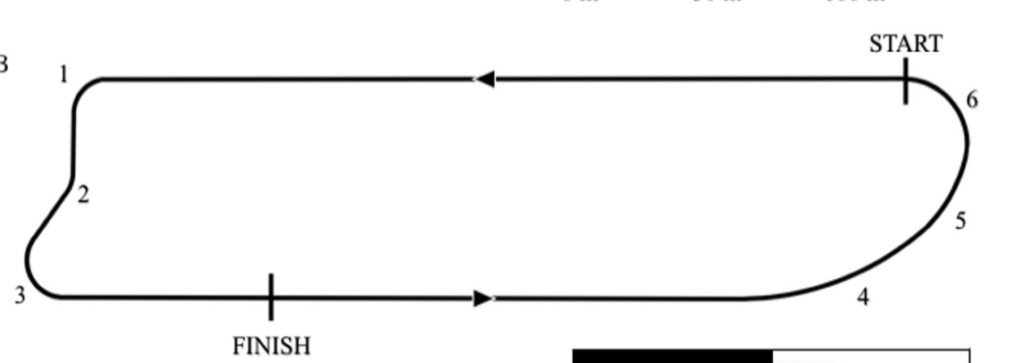
So when applying this model to each of these corners, this is what they found:
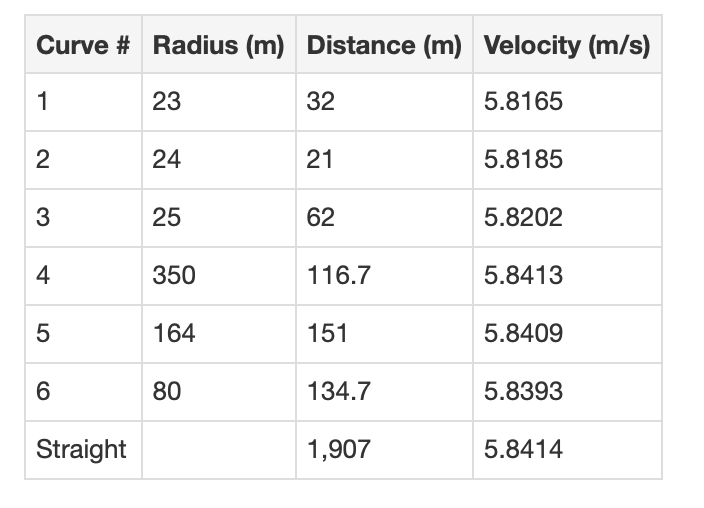
As seen above, his straight-away speed was 5.8414m/s (2:51/K). Even around the tightest corners (which was #1 with a radius of 23m), his modeled velocity would still be 2:51, with the difference being expressed in milliseconds. So really, these corners didn’t hurt him compared to straight-line running, especially with the fancy blue line showing him the perfect tangent.
In fact, this model predicts that if one were to run a 2:02 marathon on a 200m track (422x 17.5m radius turns) would correspond to a 2:01:32 on a straight-line course, assuming all else is equal!
Applications:
As mentioned briefly above, these predictions are looking at pure metabolic cost of battling your body’s inertia as you try to turn while your body tries to go straight. Of course, other factors are at play. The main one in my mind is running that perfect tangent around the corner – and can you actually maintain a consistent effort as you do so!
However, considering all the possible ways this model could be wrong, it does seem fairly accurate. If you look at their predictions vs. actual indoor records on different sizes of tracks, the model is off by 0.45-1.78% for distances in the 1500-5000m range. Also, keep in mind that this is working with MORE corners (more time lost, more error) and FASTER speeds (more time lost once again) than literally all of us are running in any of our outdoor races.
Based on these results, I would confidently say the actual time lost from burning more oxygen to battle corners is likely irrelevant, and at worst, only responsible for the loss of a few seconds.
If their model predicts that you can run 422 tight corners at sub 3:00/K over the course of 42.2 and only lose 28s, then I think it’s safe to say virtually all the time we’re losing on loop courses like the Re-Fridgee-8er comes down to how well we run tangents. Just how much time can you lose from not running the tangents? That’s up to you! Keep your head up, pick your line, avoid weaving and do your best to limit your losses!


2 Comments
Thanks for this, Sean! There’s another way to think about the extreme case of a 180 degree turn, though (these have always seemed far, far worse to me than right angles). A pure out-and-back turnaround is entirely equivalent to slowing yourself to a complete stop and then starting up again. It seems to me that the effect of that could be measured experimentally.
Something to think about in advance of the DTK mile, perhaps?
Thanks for reading! Definitely if the radius of the 180 degree turn is next to nothing, the model falls apart, there are just too many other factors at play! It’d be a pretty complicated, multifactorial undertaking to say this is how much slower a 0m radius, 180 degree corner is…but gotta start somewhere…why not on those suffering at the DTK mile?!
Comments are closed.